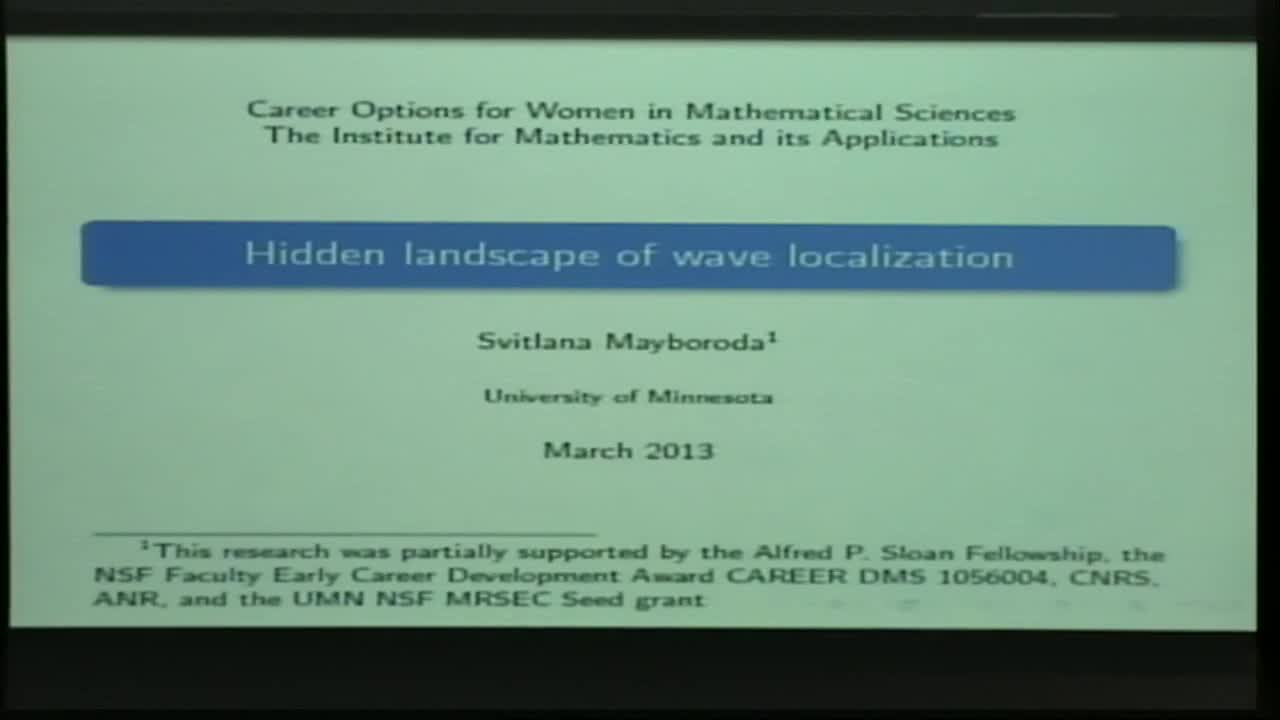Hidden landscape of wave localization
Presenter
March 4, 2013
Keywords:
- Waves
Abstract
Localization of vibrations is one of the most intriguing
features exhibited by irregular or inhomogeneous media. A striking
(but certainly not unique) example is the so called 'Anderson
localization' of quantum states by a random potential, that was
discovered by Anderson in 1958 and that brought him the Nobel Prize in
1977. Anderson localization is one of the central topics in condensed
matter physics, producing hundreds of papers each year. Yet, there
exists up to now no theoretical framework able to predict exactly what
triggers localization, where it happens and at which frequency.
We present a fundamentally new mathematical approach that explains how
the system geometry and the differential operator intervening in the
wave equation interplay to give rise to a ``landscape" that reveals
weakly coupled subregions inside the system, and how these regions
shape the spatial distribution of the vibrational eigenmodes.
This is joint work with Marcel Filoche.
Svitlana Mayboroda is an Associate Professor at the School of
Mathematics at the University of Minnesota. Her research interests
include elliptic partial differential equations, harmonic analysis,
and geometric measure theory. She graduated from the University of
Missouri in 2005 and held positions at the Ohio State University,
Brown University, Australian National University, and Purdue
University before coming to Minnesota. Svitlana Mayboroda has been a
recipient of the Alfred P. Sloan Fellowship and NSF CAREER award. She
is the creator of the Workshop for Women in Analysis and PDEs.
